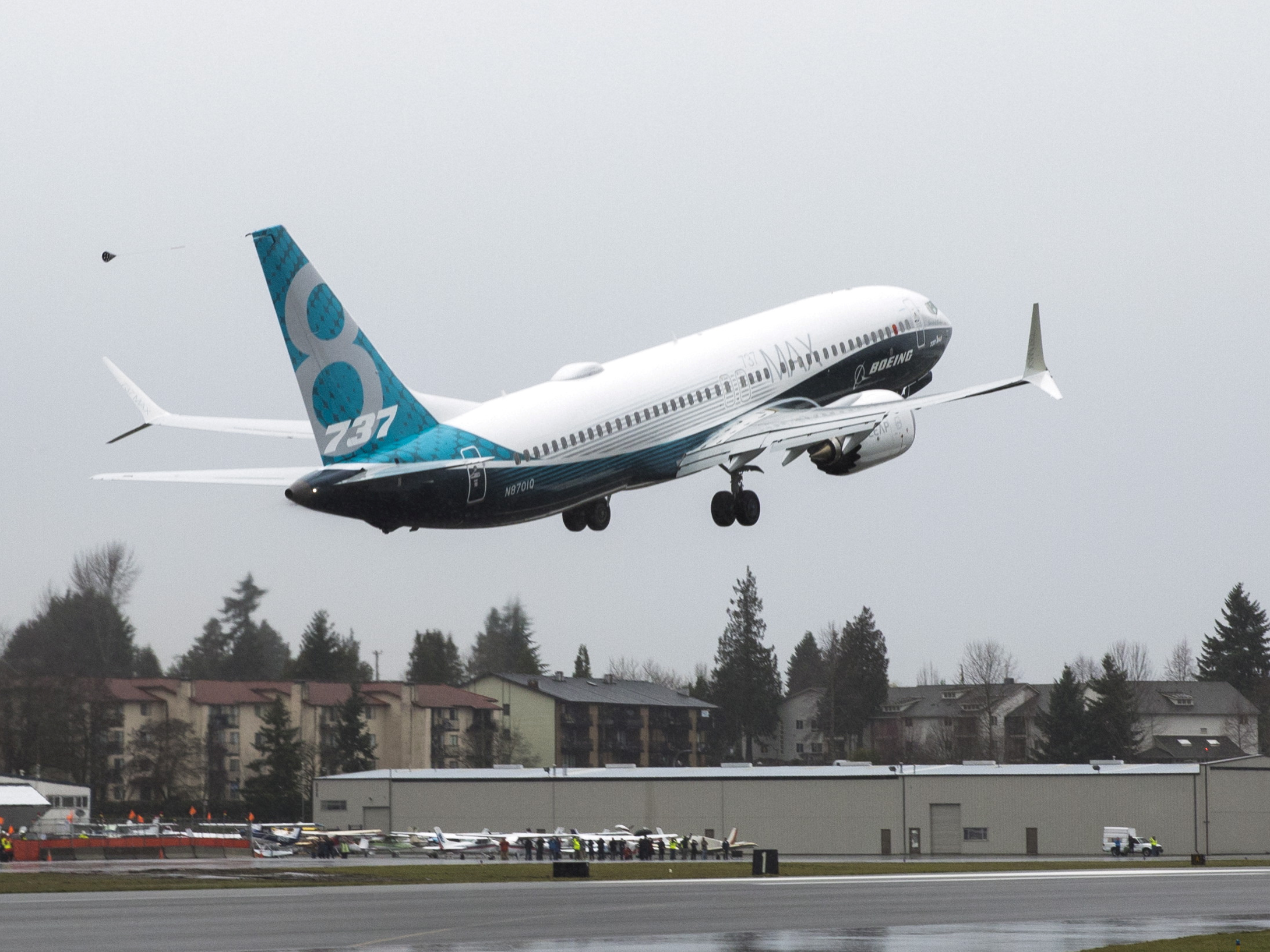- Ethiopia’s Aircraft Accident Investigation Bureau (AIB) released its preliminary report on the crash of Ethiopian Airlines Flight ET302 on Thursday.
- According to the report, readings from the plane’s flight data recorder shows that faulty readings from a malfunctioning angle-of-attack (AOA) sensor triggered the Boeing 737 Max’s Maneuvering Characteristic Augmentation System (MCAS), which is designed to automatically push the nose of the plane downward.
- Boeing confirmed that an erroneous AOA sensor triggered MCAS on the Ethiopian jet just like it had done on Lion Air Flight JT610, another Boeing 737 Max that crashed on October 28 off the coast of Indonesia.
- Data from the FDR along with recordings from the cockpit seemingly confirm that the Ethiopian pilots followed Boeing’s procedures on how to defeat an erroneously triggered MCAS.
On Thursday, Ethiopia’s Aircraft Accident Investigation Bureau (AIB) released its preliminary report on the crash of Ethiopian Airlines Flight ET302, which killed all 157 passengers and crew. The crash, which took place on March 10, marked the second fatal crash of a nearly brand-new Boeing 737 Max airliner since October and precipitated the grounding of the global 737 Max fleet.
The AIB’s initial findings present data from the crashed plane’s flight data recorder (FDR) which shows that faulty readings from a malfunctioning angle-of-attack (AOA) sensor triggered the 737 Max’s Maneuvering Characteristic Augmentation System (MCAS) that is designed to automatically push the nose of the plane downward.
“Shortly after liftoff, the value of the left angle of attack sensor deviated from the right one and reached 74.5 degrees while the right angle of attack sensor value was 15.3 degrees,” the report said.
In a statement, Boeing confirmed that the AOA sensor triggered MCAS just like it had done on Lion Air Flight JT610, which crashed on October 28 off the coast of Indonesia.
"The preliminary report contains flight data recorder information indicating the airplane had an erroneous angle of attack sensor input that activated the Maneuvering Characteristics Augmentation System (MCAS) function during the flight, as it had during the Lion Air 610 flight," Boeing said.
Data from the FDR along with recordings from the cockpit seemingly confirm that the Ethiopian pilots followed Boeing's procedures on how to defeat an erroneously triggered MCAS.
Read more: FAA expects Boeing to come up with new software to fix the grounded 737 Max in a matter of weeks.
Unfortunately, the pilots also reported issues with portions of the manual flight controls after MCAS was turned off.
More specifically, the first officer complained approximately three minutes into the flight that his controls to manually trim the aircraft stabilizers were not working.
The preliminary report did not assign causation for the crash and a final report is expected at a later date.
Boeing is currently working on a software update for the 737 Max's control system that will dial back the intrusiveness of MCAS.
"To ensure unintended MCAS activation will not occur again, Boeing has developed and is planning to release a software update to MCAS and an associated comprehensive pilot training and supplementary education program for the 737 Max," Boeing's statement said.
"As previously announced, the update adds additional layers of protection and will prevent erroneous data from causing MCAS activation," Boeing went on to say. "Flight crews will always have the ability to override MCAS and manually control the airplane."
According to the Federal Aviation Administration, Boeing is expected to submit its package of potential fixes for regulatory approval in the coming weeks.

